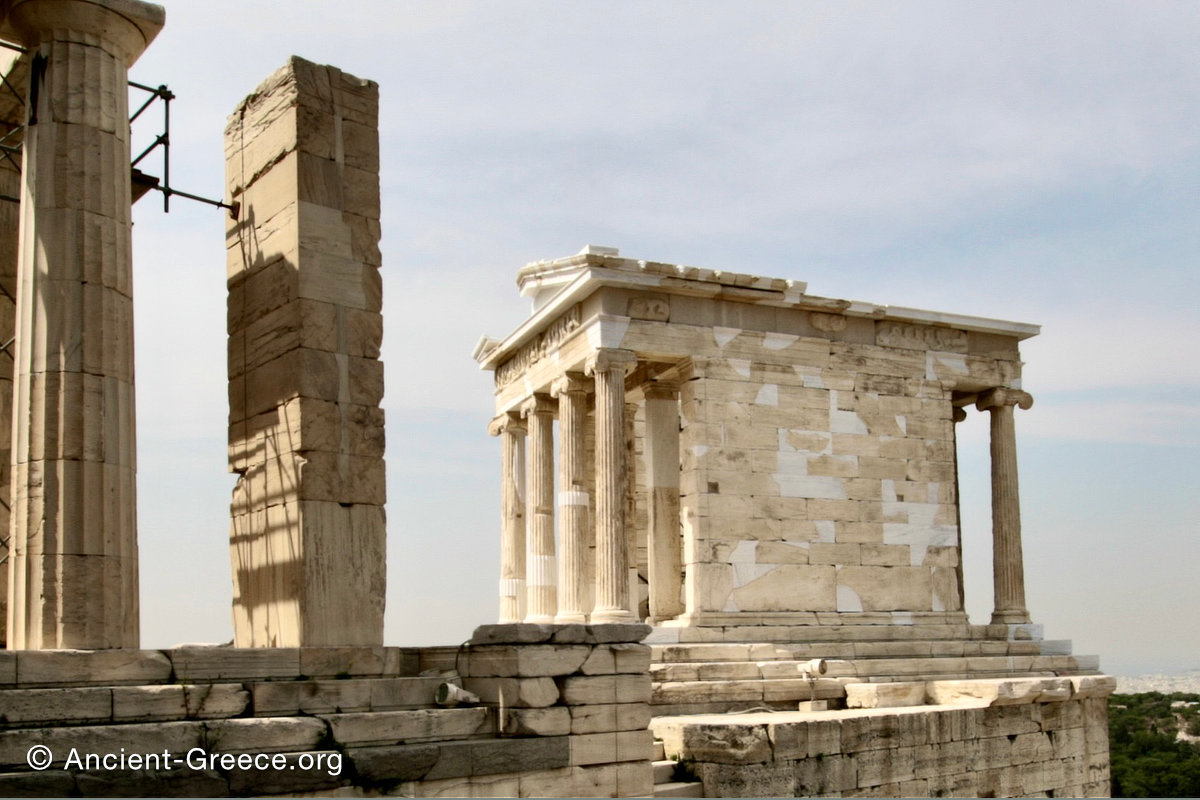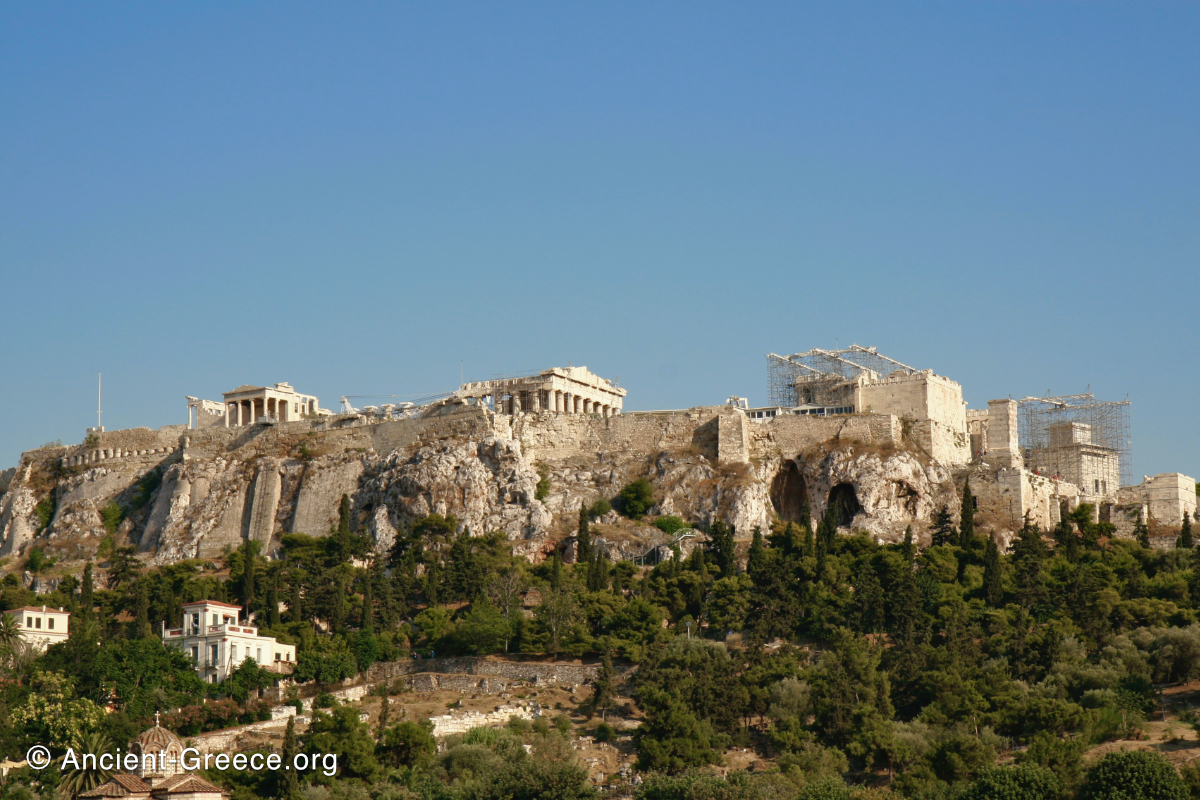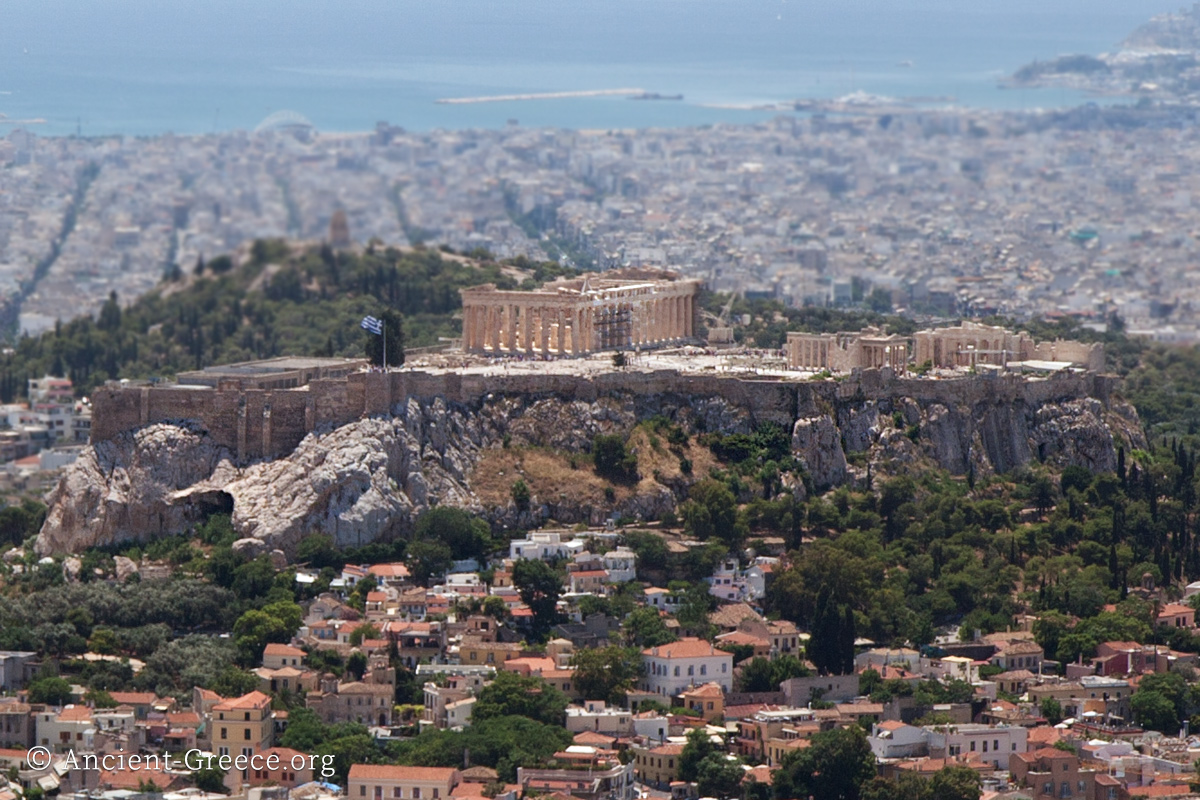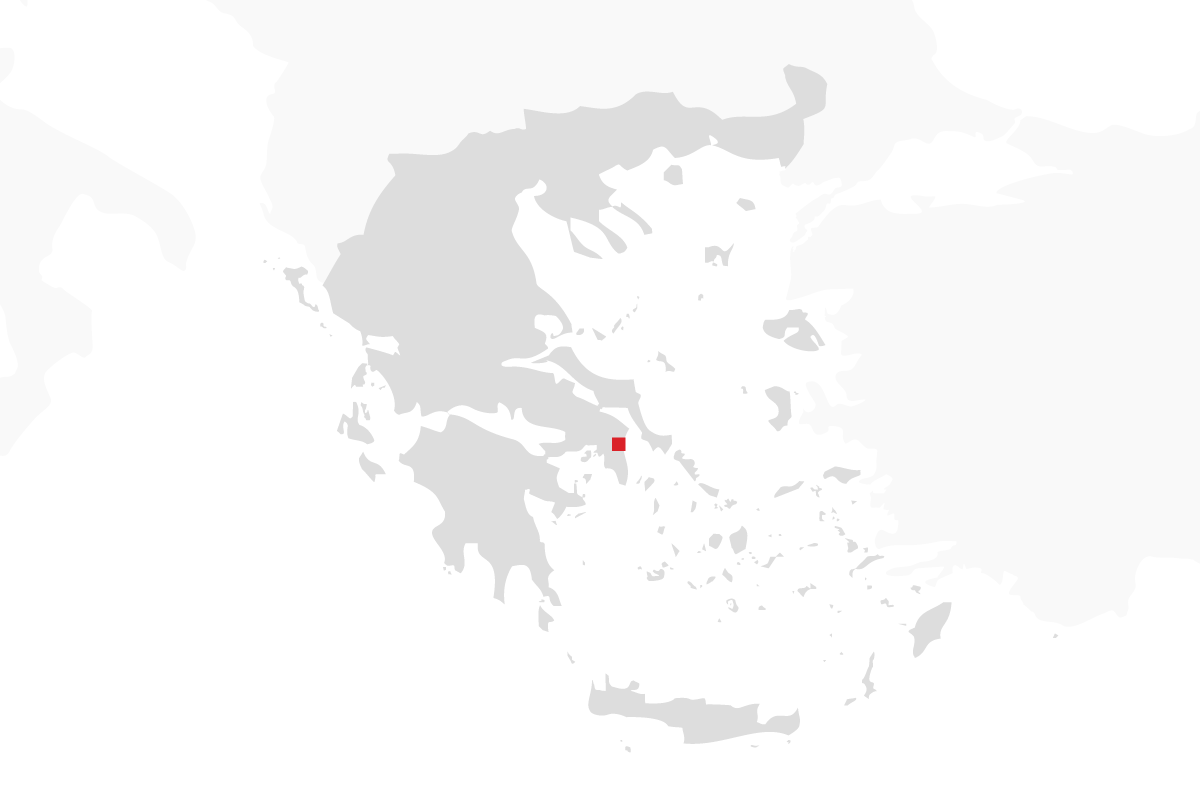
On this page:
The small temple of Athena Nike is perched above the ascent to the Acropolis, and is visible as one approaches the Propylaea.
The southwest of the Acropolis plateau, right next to the Propylaia, has been an important location of a sanctuary dating back to the Mycenaean era. It is a protruding tall mass of rock, strategically located in a way that protects the south flank of the most vulnerable access point and gate to the citadel.
The Classical temple that has survived was completed in 420 BCE. From several ancient accounts and by Pausanias we know the statue of Athena Nike in its cella was made of wood and held a pomegranate in the right hand and a helmet in the left. Since it had no wings, as it was customary for Nike statues of the time, the temple acquired the name Apteros Nike (wing-less victory). It is said that the statue was deprived of wings so it could never leave the city of Athens.

History
Early in its history it was a place of worship for deities associated with wars, perhaps Bronze Age “Nike” gods or goddesses, which with time fused with the cult of Athena Nike of later centuries. Excavations have revealed that on this location an open pit existed that Bronze Age Greeks used to pour libations and to deposit primitive figurines of the deities worshiped.
During the Archaic era a small temple stood on the site that faced an altar to its east. This building was destroyed by the Persians in 480 BCE along with the rest of the Acropolis, and was not rebuilt until 435 BCE.
About two thousand years later, during Ottoman occupation in 1687 the temple of Athena Nike was dismantled when the “Venetians” besieged the Turks at the Acropolis. The Turks used the stones from the temple to build a bastion next to the Propylaia. The “Venetians” finally forced the Turks to surrender after eight days of intense bombardment, and the temple stones remained as part of the bastion until the liberation of Greece.
In 1834 during systematic excavations and rebuilding of the Acropolis by Ross and Hansen the bastion was dismantled and the temple was reconstructed during the next four years.
In the late 1930s under the direction of N. Balanos and Orlandos the entire bastion along with the temple was dismantled in order to address structural problems with the sub-structure and was reconstructed by 1940.
In 1998 the temple began a new cycle of reconstruction. The frieze was removed and placed in the Acropolis museum, and the temple dismantled completely once again to replace the corroded concrete floor and the iron beams that were present as the result of previous reconstructions.
The Temple
The Classical temple is considerably smaller than the other temples of the Acropolis. It is the first building that greets the visitors who approach the Propylaia and its elegant Ionic features balance the dominating Doric character of the nearby Propylaia.
The temple was designed by Kallikrates and is 11 feet tall from the stylobate to the apex of its pediment.
The temple’s ratio of the column height to its length is 7:1 instead of the customary 9:1 of other Ionic temples.
As was customary in Attica (but not in Ionia) the temple was decorated with a continuous frieze.
It faces to the east and its entrance is lined with four monolithic Ionic columns that support a shallow porch.
The west end is similarly treated with four Ionic columns and a porch, but they preceded a blind wall. The inclusion of a tetrastyle (four columns) at the back of the temple was necessary for this side faced the entrance to the Acropolis.
Temple of Athena Nike Frieze
Athena Nike Frieze
The small temple of Athena Nike right next to the Propylaia was decorated with a continuous Ionic freeze as was customary in Attica (temples in Ionia itself did not include a frieze).
The north frieze as well as the south one depicts a battle of Greeks against Persians, and it is the earliest example of sculpture commemorative of specific historical events. The relief of the west wall represents a battle between Greeks and other Greeks (perhaps a reference to the ongoing Peloponnesian war), while the East frieze above the colonnade of the entrance shows a number of gods and deities in various stages of activity.
The art itself is indicative of a developing style that had mastered accurate representation and was now content with exploring other aesthetic issues.
The figures are elongated wearing drapery that not only clothes them but with its deep folds creates a rhythmic visual pattern. The bodies are contorted in extreme, almost awkward poses bestowing a degree of expressionist anxiety to the idealized figures.
These stylistic innovations act as a prelude to the development of the soon to be realized Hellenistic art.
The Parapet Frieze
The parapet of the Temple of Athena Nike surrounded the temple and acted as a guardrail to protect people from falling off the steep bastion.
It was elaborately decorated by relief sculptures which were seen best by the visitors ascending the ramp towards the Propylaia. It did not depict a coherent story like the Parthenon frieze, but instead it was decorated with a number of Nike relief sculptures in various states of activity.
The parapet was built after the temple was complete, perhaps as late as 410 BCE.
The parapet relief was created late during the Peloponnesian war, after the Athenians suffered several humiliating defeats that placed the fate of their empire in jeopardy. The sculptures depict victory, repeated over and over around the structure in a monotonous manner with little variety in form or activity.
Instead of a narrative the artist’s interest revolves around the intricate folds of the drapery of Nike’s chiton as it flows around the body seemingly oblivious to the laws of nature or the actions of the figure under it.
The craftsmanship of the relief is exquisite and reveals a change in focus from the human anatomy and narrative structure to a more formal (and some would say superficial) preoccupation with line and contrast as the fabric twists and turns more in order to create an impression, and less to realistically describe physical events.
In this sense, the figures of Nike derive their meaning and importance from ornamentation and flair.
Perhaps the relief was meant to be a distraction for the brutal reality of the enduring war, or simply the enchantment with the accurate representation of the figure had run its course and new aesthetic concepts were explored. In any case, the relief sculptures of the parapet of the temple of Athena Nike can be seen as a prelude to the later stylistic conventions of Hellenistic art.
Nike Adjusting her Sandal is a characteristic example of this new developments with the depiction of the transparent drapery that not only reveals the body underneath in all its glory, but it also implies the development of artists who, having mastered human anatomy look forward to unexplored ways to use the figure as an expressive medium, and to exhibit their aptitude.








